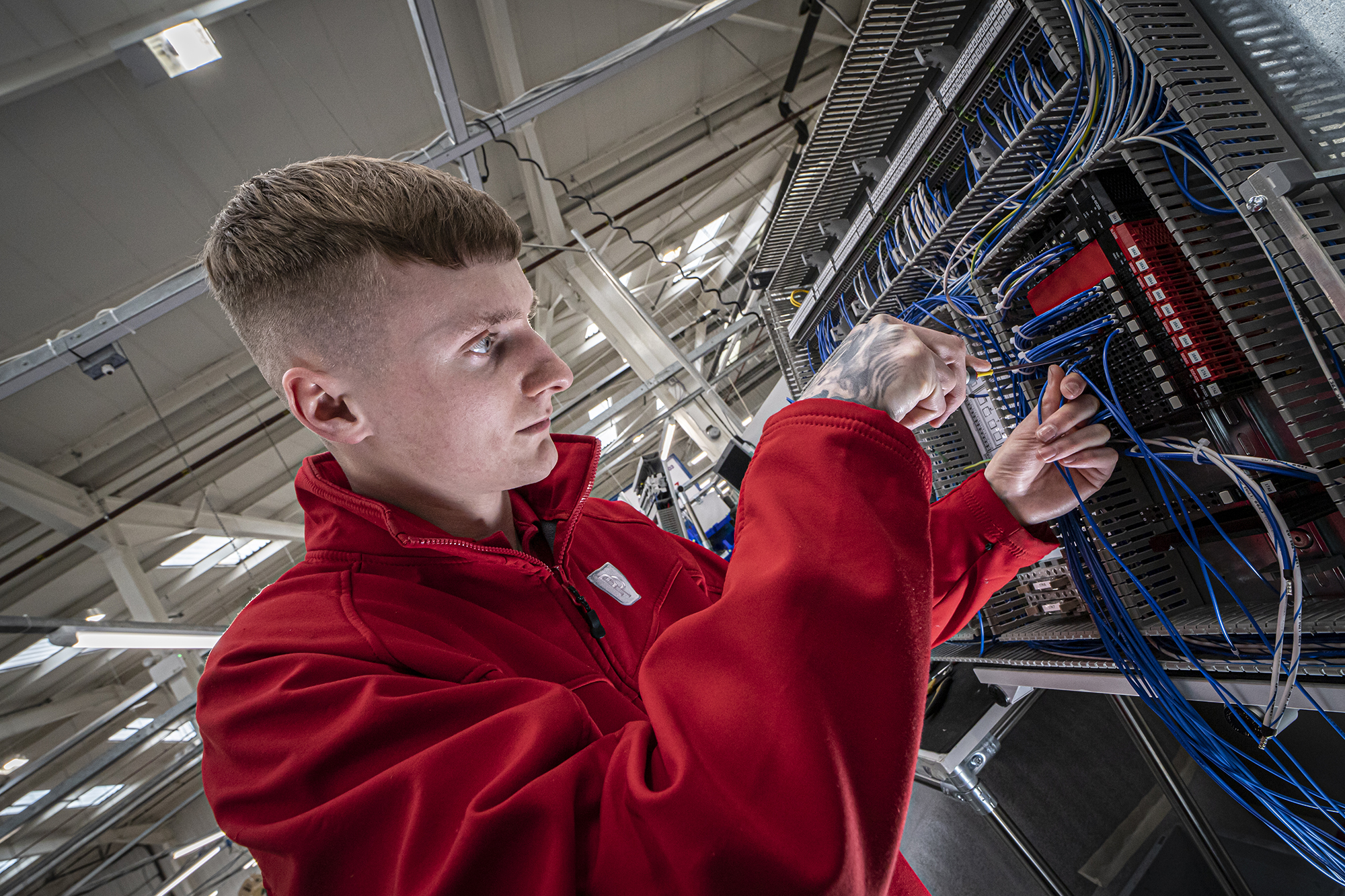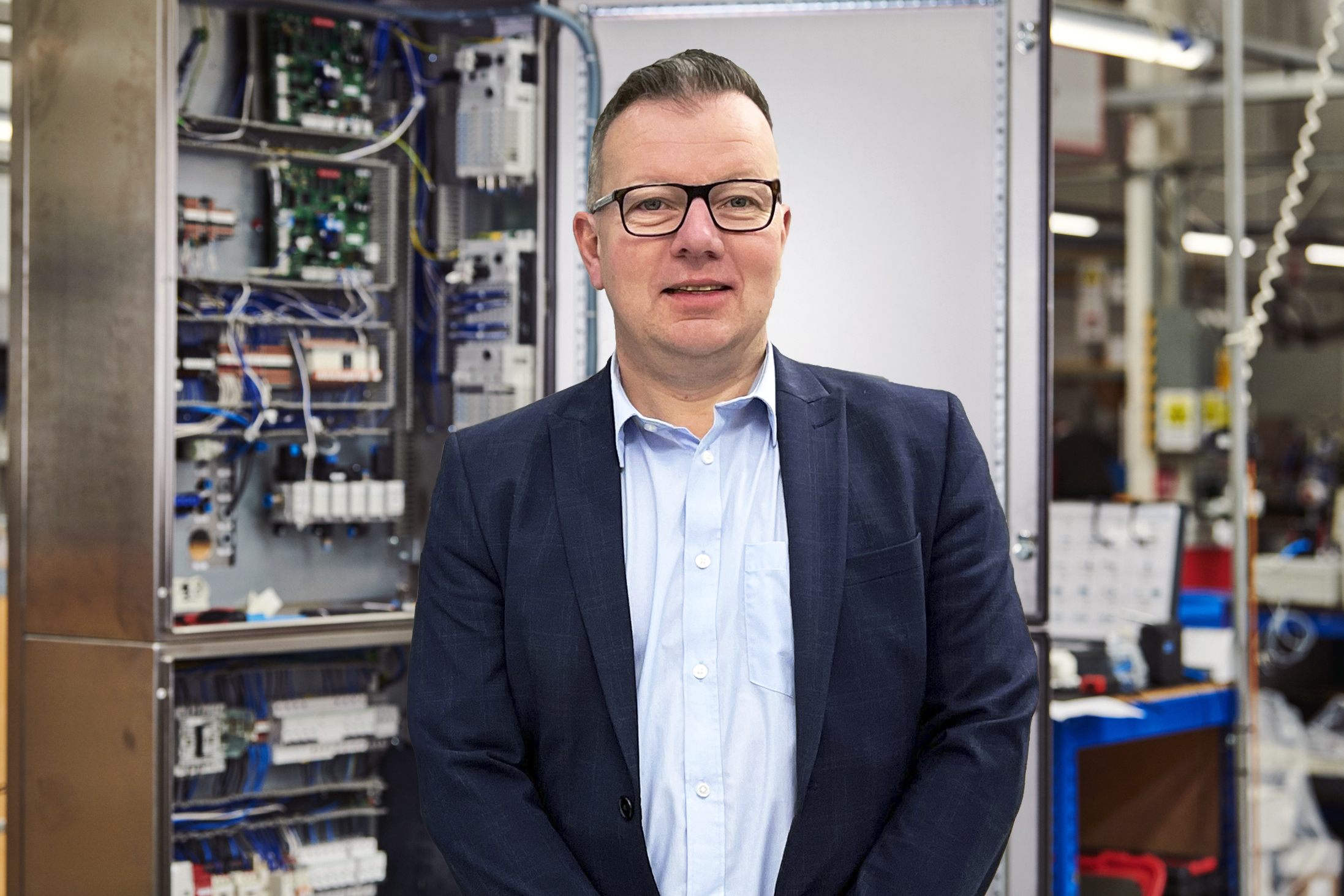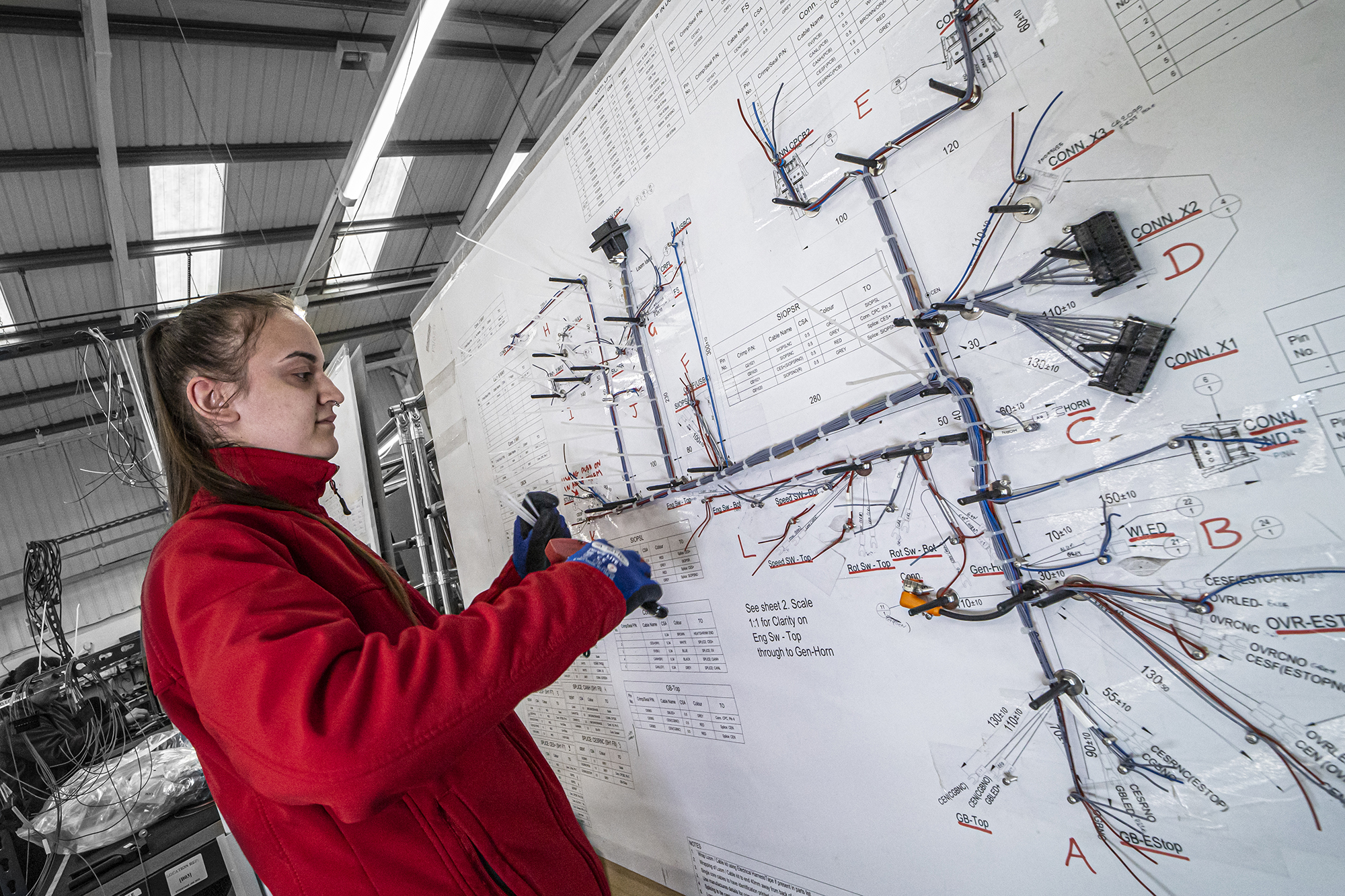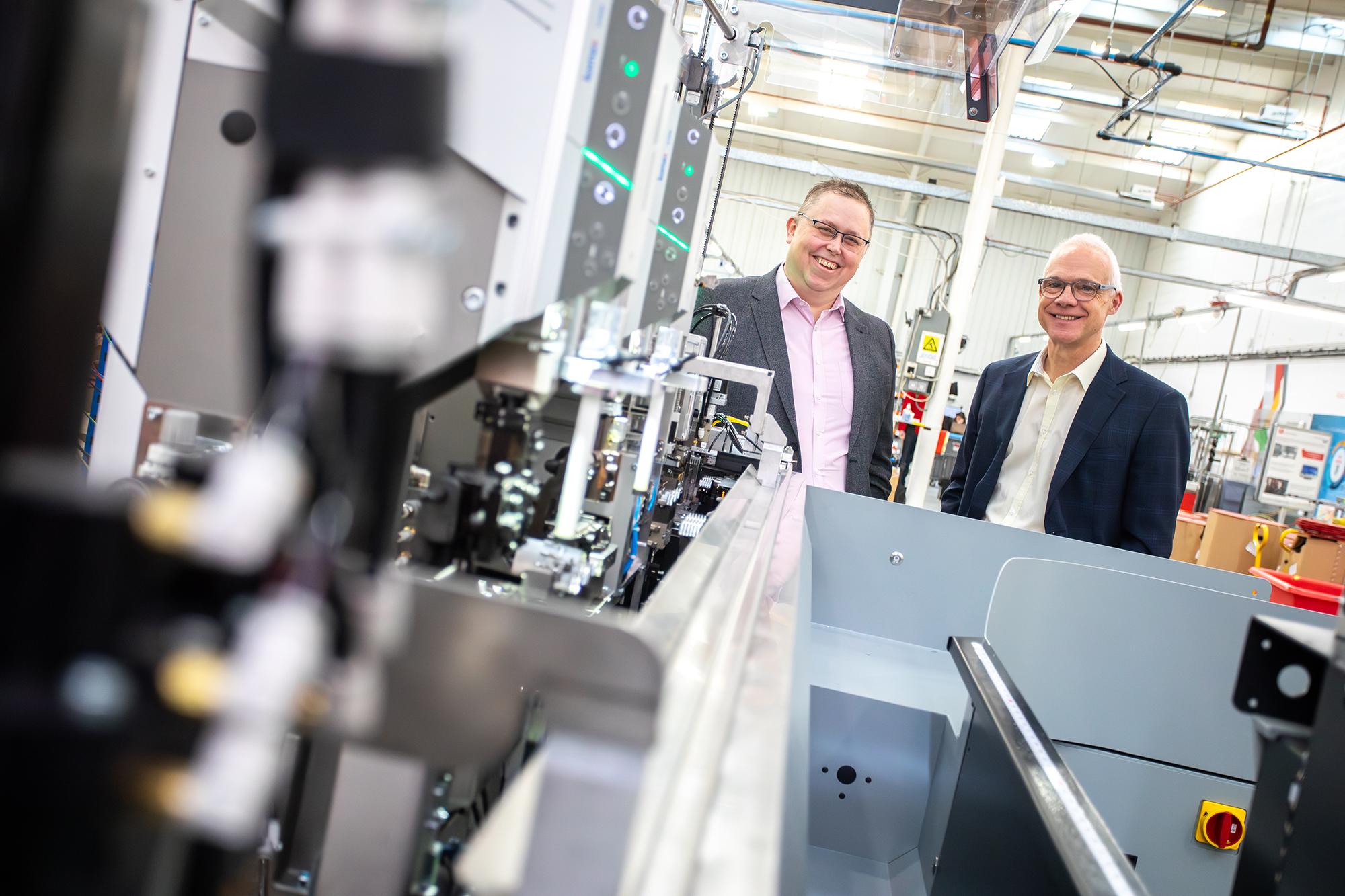8 minute read • published in partnership with PP Control & Automation
Opinion: UK manufacturing’s era of ‘pragmatically adaptive’ strategy is underway – Part Three: What’s so puzzling about productivity?
Andy Whittaker, Director (General Manager) at PP Control and Automation, responds to the findings of the Make UK Executive Survey by addressing productivity in the current climate of rising operational and employment costs.
Productivity has long been the Achilles’ heel of the UK economy. For the manufacturing sector, the issue is not one of ambition, but one of execution. The latest Make UK Executive Survey highlights a renewed emphasis on productivity improvement, with manufacturers recognising it as a potential weapon in the face of rising employment costs, global competition, and economic uncertainty.
As we all know, the ‘productivity puzzle’ has been doing the rounds for decades now, but is it really that puzzling?
Industry may never have properly recovered productivity since the 2008 recession. However, the route to recovery and betterment should be clear in all our minds – targeted investment, collaborative action and operational innovation. This power of three should be the UK manufacturing community mandate and, bearing in mind the current business landscape, perhaps it matters more than ever.
There is no escaping this era of tight margins and economic volatility, and whilst productivity will always be the key performance metric to track, it’s also now critical to many survival strategies.
Key economic drivers
Rising employment costs are putting a serious burden on manufacturers. With minimum wage increases and higher employer contributions, companies must learn to do more with fewer people. The supply chain’s time in the spotlight during Covid taught the manufacturing community a harsh lesson in volatility, and we’re not totally out of the woods when it comes to disruptions, which demand a leaner, more responsive operational model.
The metrics around experienced workers retiring and fewer young people entering the sector are both sad and difficult to improve upon. It is yet another long-fought challenge for the industry and one which leaves too many large gaps to fill with reliance solely on engaging the next generation. The focus on productivity in this case intensifies – productivity gains must fill the gaps that a new workforce cannot.

The 2025 Make UK Executive Survey showed a renewed focus by manufacturers on productivity as a defence against rising costs, competition, and uncertainty / Picture: PPC&A
The UK’s labour productivity has lagged other advanced economies like Germany, the US, and France for years. According to ONS data, domestic manufacturing productivity is around 20-30% lower than that of Germany, depending on the sub-sector. Higher productivity translates into lower unit costs, improved export potential and market resilience. Productivity is entwined with our global competitive standing.
Let’s not skirt around just how important a measure this is.
Strategic levers for improving productivity
A common misconception to address outright, is that productivity gains are achieved by working harder. This is not necessarily the case, they instead come from working smarter. Sounds simple, and in theory it is, but it does require a multi-pronged strategy involving technology, people, processes, and culture.
The Make UK survey shows that 49% of manufacturers are prioritising technology deployment in 2025. This is the single most powerful enabler of productivity – puzzle solved? Whilst we scratch our heads over the ‘productivity puzzle’, there’s a manufacturing business somewhere with investment in automation and robotics that has directly reduced manual labour and increased speed and consistency dramatically, and they’re wondering what all the fuss is about.
The UK has approximately 98 industrial robots per 10,000 manufacturing employees, placing it below the global average of 151 and making it the lowest among G7 countries. Our lower adoption correlates with our lagging productivity compared to nations with higher robot densities. Perhaps that 49% prioritising technology deployment are amongst those in the UK shifting its dated position away from reliance on manual labour and the preference for short-term returns over long-term capital investment.
There will be other technology priorities, closely related and equally important to productivity, that will be on the minds of the manufacturing community, from digital twin technology and IoT to AI and machine learning. Enabling virtual testing of processes and systems, real-time data for predictive maintenance and waste reduction, and the ability to enhance decision-making and supply chain forecasting are all among the benefits of new tech investment.
Tech for productivity
With margins tight amongst UK manufacturers, the clever bit is identifying a realistic technology roadmap and investment strategy. Whether starting with small incremental steps or identifying a sizable area of focus, any new technology deployment in the sphere of automation and digitalisation will drive improved productivity results.
We know this first-hand at PP Control & Automation (PP C&A). The best recent example came as we entered 2024 with a £250,000 investment in the latest automated cable preparation and crimping technology. The rewards of deployment were instant, utilising improved crimp force monitoring and enhanced quality software validation to group cables together to simplify build orders, feed cables at up to 22mph and deliver automatic changeovers.
What that means in productivity terms is that it’s nine times faster than doing it by hand and eliminates any human error from the process. A huge productivity coup. Whilst technology may be central to solving the productivity puzzle, in all honesty, technology alone can only deliver when it is integrated into existing workflows and supported by upskilled teams.

Andy Whittaker says pragmatic adaptation, involving strategic investment in technology and innovation, defines the current approach of UK manufacturers / Picture: PPC&A
Upskilling and empowering the workforce
Low productivity often stems from underutilised human capital. Involving employees in improvement efforts and equipping them with new skills can unleash significant performance gains. At PP C&A, there has been a clear emphasis on this since establishing the Excellence School at the turn of the millennium, followed some 20 years later with the launch of Bright Sparks University, an in-house learning and development programme.
These are giving all employees an opportunity to learn and develop, with every member of staff given access to 200 hours of fully funded development opportunities and training every year. Some people say why invest so much in training your staff, they could leave – our view is simple, imagine not training them and they stay with you!
This approach is one part of a wider productivity strategy, and we believe, a perfect platform to build from. It means empowering teams with engaging continuous improvement initiatives and lean manufacturing training to eliminate waste or developing cross-functional teams to break down silos and improve collaboration. It can also mean achieving digital literacy across the business to allow everyone the chance to leverage data-driven tools.
Operational excellence and collaboration
Productivity thrives in well-structured environments. Continuous improvement, standardisation, and clarity of roles are foundational. In our experience, three areas of operational excellence have particularly strong influence on productivity:
• Value stream mapping identifies bottlenecks and non-value-add activities
• Standard Operating Procedures (SOPs) ensure consistency across shifts and teams
• KPIs and clear visual management makes performance metrics visible and actionable at every level.
All of this is best captured under a culture of Kaizen, where small, incremental changes are made daily by those closest to the process.
One important lesson we’ve learned over the years is that improving productivity isn’t a solitary journey and shouldn’t solely be an internal mandate. Collaboration, whether encouraging cross-functional team building, or developing strong partnerships with suppliers, customers, and academic institutions, can all accelerate outcomes. And participating in industry networks and associations – focused on best practice dissemination – is something we believe strongly in.
A good example of the latter is our work with Sharing in Growth (SiG). A couple of years ago, as a senior management team and board of directors, we were looking for a catalyst for further improvement.

Andy says upskilling and empowering the workforce through training and continuous improvement initiatives is vital to productivity success / Picture: PPC&A
Our business wasn’t new to continuous improvement or people and process development. We have, of course, already founded our own in-house training school, adopted Lean and Six Sigma, created structured training road maps, and completed lots of work around employee engagement. But, when an opportunity arose to be selected for the SiG transformation programme, we welcomed this as a new catalyst.
SiG team members were deployed into the organisation to provide training, coaching, and mentoring. One of its first involvements was to complete a gap analysis, identifying immediate and longer-term goals, as well as implementing a ‘survive and thrive’ approach to emerge from the economic shackles of Brexit, Covid, and the rolling disruptions of universal challenges.
Communicating strategy top-down and throughout the organisation was one driver and SiG offered the tools to do this more effectively. We also tested new visual management approaches and introduced the ‘lighthouse’ concept, and SQCDP (Safety, Quality, Cost, Delivery, People), which display key performance metrics on boards in every production cell and department in the business. These are also used to focus conversations during daily cross-functional meetings, keeping everyone aligned on the goals that matter.
Furthermore, people are even more engaged. Their impact on what we’re trying to achieve is clearer than it has ever been and that also goes for their development opportunities. Versatility matrices and skills nesting structures have been developed to better define roles and responsibilities and are linked to pay banding, giving employees a clearer understanding of progression within departments, plus the skills and the training needed to fulfil certain, more varied roles.
There’s no point ever thinking you’ve reached your optimum performance; the moment you do that then complacency sets in, things stagnate, and you ultimately find yourselves dropping behind emerging competition. The SiG partnership is a great example of how collaboration can keep things fresh and engaging, especially where productivity and performance is concerned.
Productivity and pragmatism
It is no surprise that improving productivity has everyone’s attention in 2025, a year where we are all in the throes of rising costs, skills challenges and global uncertainty. Productivity is the silent multiplier of manufacturing competitiveness after all.
UK manufacturers must embrace a dual approach: investing in smart technologies and empowering their people to use them. Leveraging collaboration, I believe, is also vital. The current economic climate and immediate challenges in play intensify the focus on productivity but the Make UK Executive Survey results seem to suggest that priorities for UK manufacturers are viewed with long-term competitiveness in mind.

PP Control & Automation made a £250,000 investment in automated cable preparation which increased speed nine-fold and eliminated human error / Picture: PPC&A
2025 needs to be the year we, as a community, begin to close the gap with international peers, and focus on what a more sustainable, high-performance manufacturing sector in the UK can mean for economic prosperity.
To conclude this series of response articles, let’s go back to the start, and to the findings from the survey. They clearly illustrate a UK manufacturing community that is not driven by blind optimism or paralysed by uncertainty but instead anchored in pragmatic adaptation. Faced with rising employment costs most significantly, businesses are responding not by retreating, but by recalibrating.
Nearly half (49%) are prioritising investment in technology as a necessary route to enhance productivity, reduce overheads, and future-proof operations. Meanwhile, 78% plan to invest in new product development, a clear signal that innovation is being used as a tool for resilience and differentiation, not just growth for its own sake.
Furthermore, 37% of manufacturers aim to enter new markets, domestically and internationally, yet this is not expansion at any cost. It’s strategic, calculated, and often supported by concurrent investments in skills, systems, and supply chain capabilities. This restrained but intentional approach encapsulates what it means to be pragmatically adaptive – acknowledging economic headwinds, yet still charting a deliberate path forward.
In this climate, success won’t come from radical transformation. Instead, it will be achieved by steady recalibration that defines this new era of pragmatically adaptive strategy.